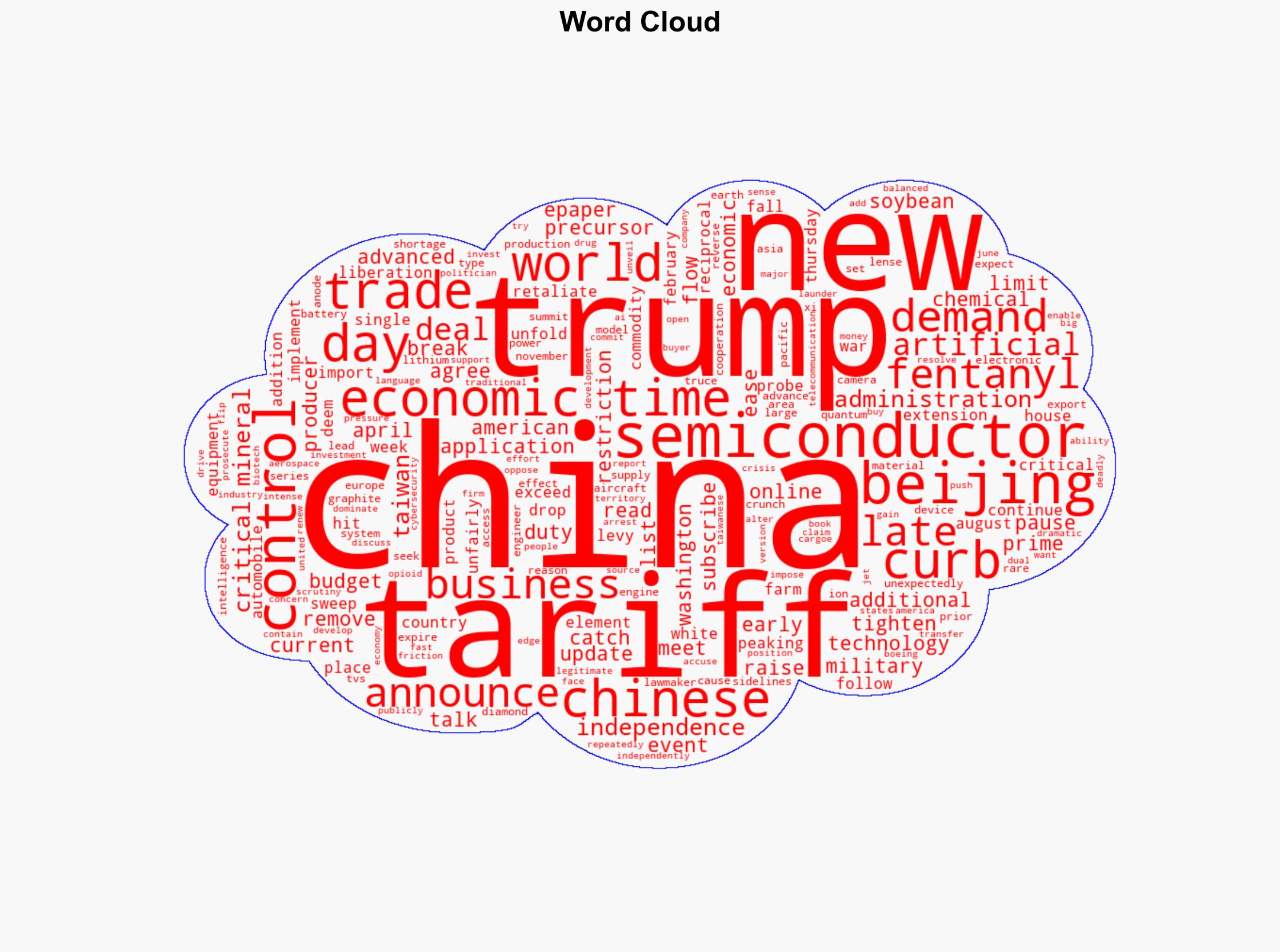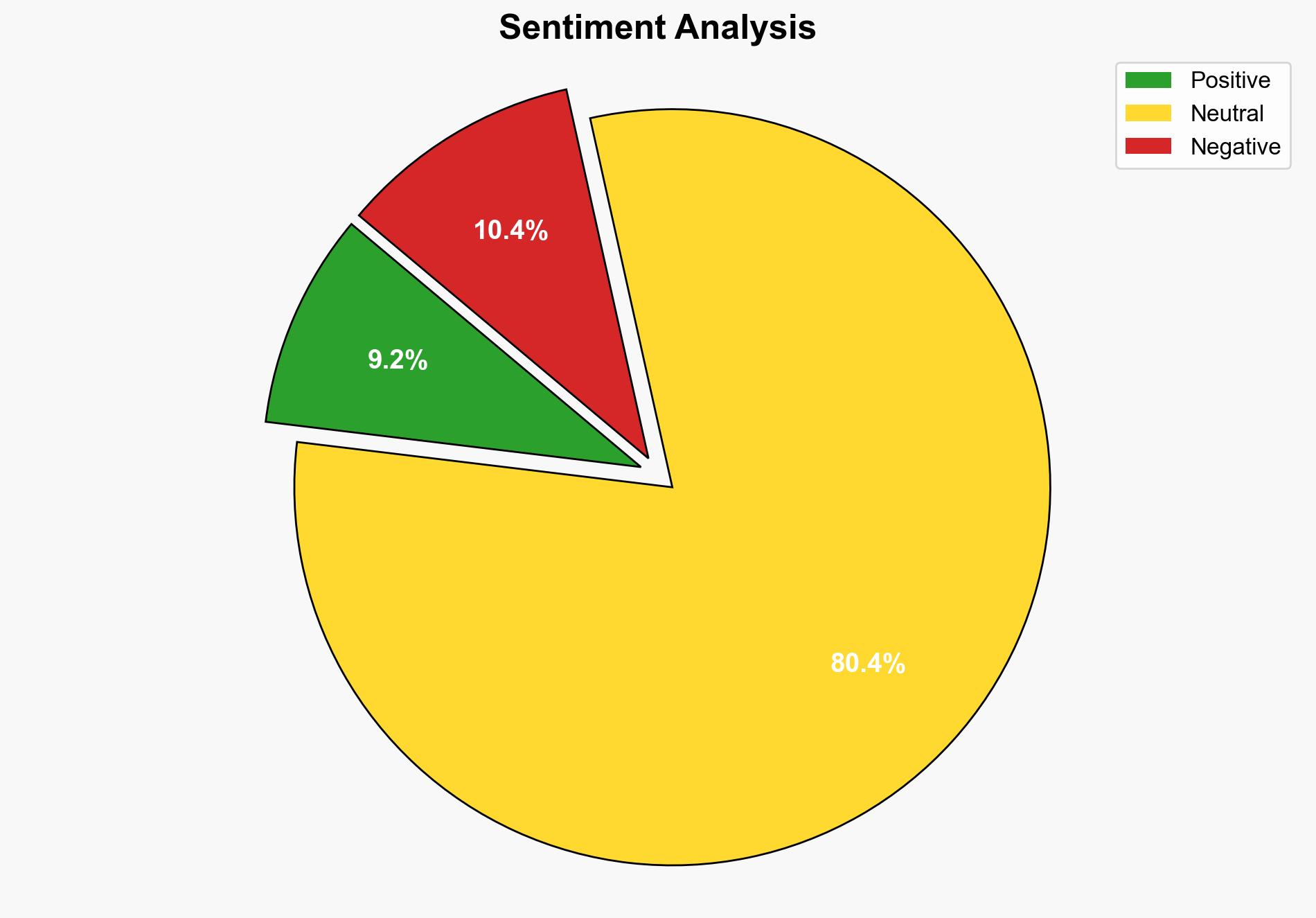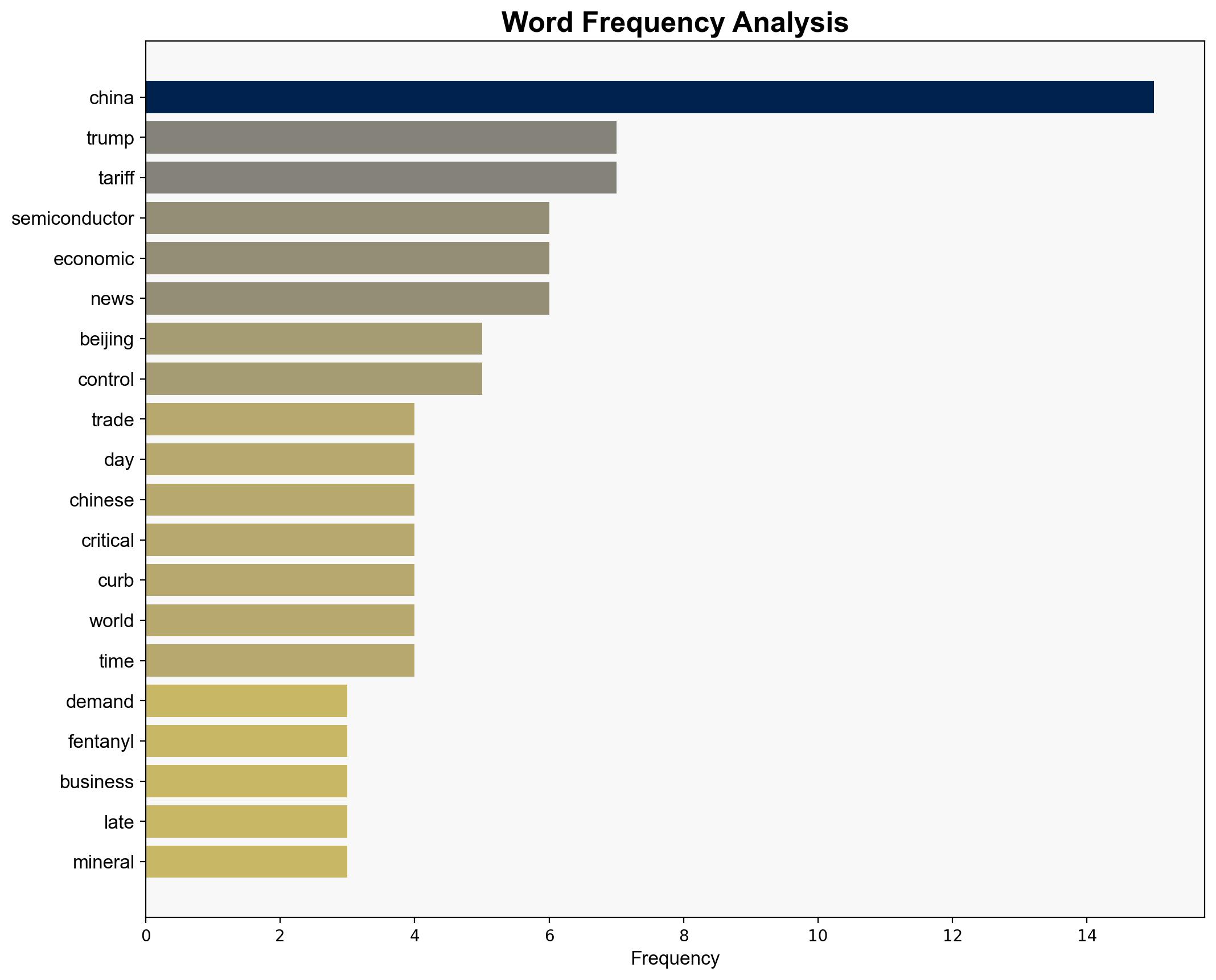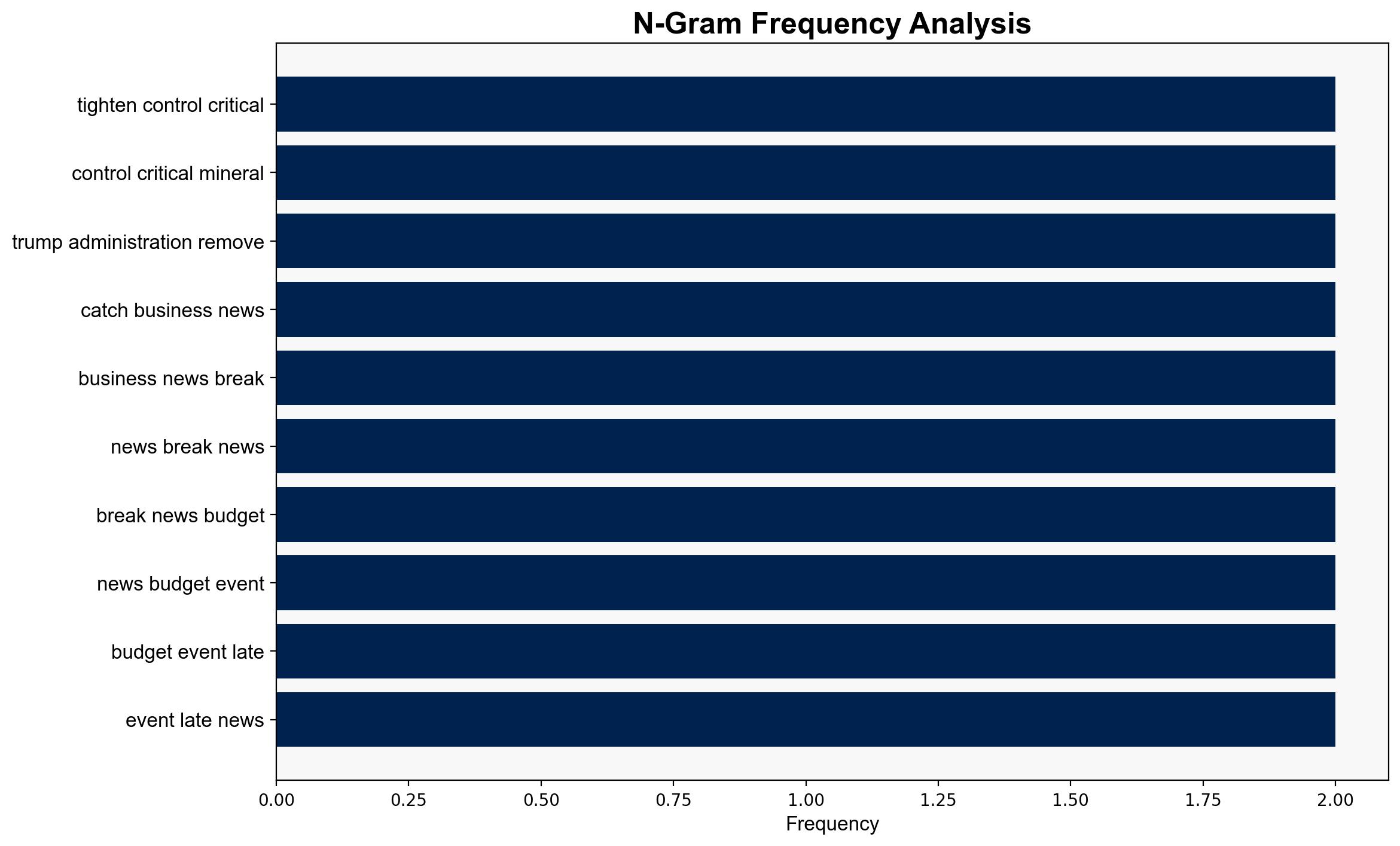What are the latest sticking points in US-China tensions – The Times of India
Published on: 2025-10-10
Intelligence Report: What are the latest sticking points in US-China tensions – The Times of India
1. BLUF (Bottom Line Up Front)
The primary sticking points in US-China tensions revolve around trade tariffs, control of critical minerals, and geopolitical issues such as Taiwan. The most supported hypothesis suggests that China is strategically leveraging its control over critical minerals to gain concessions in trade and technology disputes. Confidence level: Moderate. Recommended action: The US should diversify its supply chain for critical minerals and engage in multilateral discussions to address trade imbalances and geopolitical tensions.
2. Competing Hypotheses
Hypothesis 1: China is using its control over critical minerals as a strategic tool to pressure the US into easing trade tariffs and restrictions on Chinese firms.
Hypothesis 2: The US is maintaining tariffs and restrictions to contain China’s technological and military advancements, with critical minerals being a secondary concern.
Using the Analysis of Competing Hypotheses (ACH) 2.0, Hypothesis 1 is better supported due to China’s recent actions to curb exports of critical minerals and its demands for tariff reductions. Hypothesis 2 lacks direct evidence linking US actions primarily to mineral control.
3. Key Assumptions and Red Flags
Assumptions include the belief that China’s export curbs are solely for leverage, ignoring potential domestic economic reasons. A red flag is the lack of explicit statements from China linking mineral control to trade negotiations. Another blind spot is the potential for internal US political dynamics affecting trade policy.
4. Implications and Strategic Risks
The control of critical minerals could lead to supply chain disruptions, affecting industries reliant on semiconductors and advanced electronics. Geopolitical tensions over Taiwan could escalate, impacting regional stability. Cybersecurity risks may increase as both nations seek technological superiority.
5. Recommendations and Outlook
- Mitigate risks by diversifying sources of critical minerals through partnerships with other producing nations.
- Engage in diplomatic efforts to address trade imbalances and reduce tariffs, potentially through multilateral forums.
- Scenario Projections:
- Best Case: Bilateral agreements lead to reduced tariffs and stabilized supply chains.
- Worst Case: Escalation in trade and geopolitical tensions, leading to economic and military confrontations.
- Most Likely: Continued negotiations with intermittent tariff adjustments and strategic posturing.
6. Key Individuals and Entities
Xi Jinping, Donald Trump, Chinese semiconductor producers, US technology firms.
7. Thematic Tags
national security threats, cybersecurity, trade tensions, geopolitical strategy





